Occupational environment monitoring at a helmet manufacturing factory
99,000 ₫
Note: The above price is calculated for one sample, and the price may fluctuate depending on the area of the environment to be monitored and market movements. For more accurate pricing support, please refer to the price list or contact our consulting staff directly.
Monitoring the environment of a helmet production factory is a session of collecting, analyzing, and evaluating workplace factors that may be harmful to workers’ health.
Table of Contents
Toggle1. Overview of the helmet manufacturing factory
a. What is a helmet manufacturing factory?
Factory manufacturing helmets is a production facility specializing in the production of various types of helmets. A helmet is a personal protective device designed to protect the head and neck of the user from potential hazards and injuries during activities such as driving, participating in traffic, working in hazardous environments, or engaging in risky sports activities.

b. Production stages in a helmet manufacturing factory
In a helmet manufacturing factory, the main stages in the production process may include:
- Material preparation: The main raw materials for helmet production include plastic materials, fiberglass, impact-resistant materials, straps, and other accessories.
- Design and prototype development: Helmet design and prototype development based on safety requirements and standards. This includes creating test prototypes and adjustments to achieve the desired results.
- Outer shell processing: This process includes processing the outer shell of the helmet from materials such as composite plastic. The outer shell components can be produced by methods such as plastic injection molding, pressure casting, or other machining processes.
- Assembly and attachment of components: Helmet components including the outer shell, padding layer, straps, buckles, and other accessories will be assembled and attached together. This process requires precision and skill to ensure the completed helmet meets safety standards.
- Quality inspection: Completed helmets will undergo quality checks to ensure compliance with safety and quality standards. Inspections may include strength testing, impact resistance, insulation ability, and fire resistance.
- Printing and finishing: Helmets can be printed with information such as brand, images, or safety standards. The final finishing steps include rechecking the helmet and ensuring all parts function properly.
- Packing and transportation: Finished helmets will be safely packed to prevent damage during transportation and delivered to sales points or customers.

c. Types of machinery used in a helmet manufacturing factory
In a helmet manufacturing factory, many types of machinery are used to carry out the production stages. Below are some common types of machinery in the helmet manufacturing industry:
- Plastic injection molding machine: Used to inject plastic into molds to create helmet outer shell components.
- Plastic extrusion machine: Used to extrude and mix plastic to prepare material for the injection molding process.
- Standard casting machine: Used in pressure casting processes to create helmet outer shell components from plastic or composite materials.
- Cutting and processing machine: Used to cut and process materials such as fiberglass or composite to form necessary helmet components.
- Printing machine: Used to print information and images on helmets.
- Polishing and finishing machine: Used to polish and finish helmet components after production.
- Testing and inspection machines: Machines to test strength, impact resistance, insulation, and other safety standards of helmets.

d. What occupational diseases can workers in helmet manufacturing factories face?
Workers in helmet manufacturing factories may be exposed to certain environmental and occupational factors that can cause occupational diseases. Below are some common occupational diseases that may occur in the helmet manufacturing industry:
- Respiratory diseases: Exposure to dust, chemical fumes, or irritants during helmet production can cause respiratory problems such as pneumonia, asthma, sinusitis, and other respiratory-related illnesses.
- Skin diseases: Contact with chemicals during helmet production can cause irritation and dermatitis, leading to skin problems such as dermatitis, eczema, itching, and other skin diseases.
- Spinal and musculoskeletal disorders: Helmet production processes may require repetitive movements or working in uncomfortable positions, leading to spinal, musculoskeletal problems, and diseases such as cervical spondylosis, back pain, arthritis, and other related issues.
- Vision problems: Working in environments with strong lighting and focusing on machines and detailed equipment can cause eye strain, eye fatigue, and vision problems.
- Heat-related illnesses: In hot working environments, such as during plastic processing and machinery use, workers may suffer from dehydration and high temperatures, leading to heat-related problems such as heatstroke, heat exhaustion, and headaches.

e. Common types of helmets on the market
There are many common types of helmets on the market, depending on the purpose of use and specific safety requirements. Below are some popular types of helmets:
- Bicycle helmet: Specifically designed for cyclists, lightweight and well-ventilated, including helmets with face nets.
- Motorcycle helmet: Provides protection for the head and face of motorbike or motorcycle riders, featuring impact resistance and optimal ventilation systems.
- Construction helmet: Used in construction sites, including types such as hard hats, helmets with visors, and helmets with face shields.
- Sports helmet: Includes helmets for mountain biking, climbing, skateboarding, ice skating, horseback riding, and other outdoor sports.
- Industrial helmet: Used in industrial environments, including helmets for construction, electrical, chemical, and other industrial sectors.
- Marine helmet: Specially designed for workers on ships or at sea, featuring water resistance and impact resistance.
- Aviation helmet: Used by pilots and aviation staff, including helmets for helicopter pilots, airplane pilots, and flight attendants.
- Ski helmet: For skiing or other snow sports activities, with impact resistance and warmth retention features.
2. Overview of occupational environment monitoring services
a. What is occupational environment monitoring in a helmet manufacturing factory?
Occupational environment monitoring (or occupational environment measurement) in helmet manufacturing factories is the activity of collecting, evaluating, and analyzing measurement indicators of occupational environmental factors at helmet manufacturing factories, in order to implement timely measures, minimize environmental impacts on workers’ health, and prevent occupational diseases. Occupational environment monitoring is a mandatory regulation for helmet manufacturing factories.
Occupational environment monitoring plays the most important role in the care, protection, and enhancement of workers’ health because the main resource of the enterprise, directly creating profits, is the workforce. Workers who are frequently exposed to hazardous and occupational risks exceeding permissible standards will have their health affected and may develop occupational diseases.
REGISTER FOR OCCUPATIONAL ENVIRONMENT MONITORING SERVICES
b. Occupational environment monitoring program of An Toan Nam Viet
The occupational environment monitoring program of An Toan Nam Viet is a program researched by monitoring engineers in the field of occupational safety and environmental protection. With the goal of ensuring health and safety for workers, this program uses modern measurement methods to monitor air quality, water, and microclimate, physical, and dust factors in the working environment. This is a very important program in ensuring a safe working environment and protecting workers’ health.
In addition, the occupational environment monitoring program of An Toan Nam Viet also plays an important role in researching and developing new solutions to improve the quality of the working environment. With the dedication and professionalism of the monitoring experts, the exclusive monitoring program of An Toan Nam Viet is becoming a breakthrough in occupational safety management and environmental protection in Vietnam.

c. Standardization in the occupational environment measurement process
Standardization in the occupational environment measurement process of An Toan Nam Viet is a very important aspect in ensuring the quality of measurement results. To ensure the accuracy and reliability of measurement results, this program uses recognized standards and standardized procedures of the Ho Chi Minh City Department of Health. This ensures that the collected data will be used with high reliability in evaluating the occupational environment and making decisions to improve the working environment to protect workers’ health.
These standardized procedures also ensure that measurement results are carried out by a team of monitoring specialists with high qualifications and many years of experience, helping managers and experts trust the results from An Toan Nam Viet and make accurate and valuable decisions in protecting workers’ health and the environment.
By applying standardization in the occupational environment measurement process, An Toan Nam Viet demonstrates its commitment to ensuring a safe working environment and protecting workers’ health, while also making a positive contribution to the development and improvement of occupational safety management and environmental protection in Vietnam.
d. Occupational environment monitoring report at helmet manufacturing factory
The occupational environment monitoring results are prepared according to Form No. 04 Annex III issued with Decree 44/2016/NĐ-CP and are made into two copies: one copy sent to the labor facility that signed the contract for occupational environment monitoring and one copy kept at the monitoring organization.
The retention period of occupational environment monitoring results is in accordance with the law, which is indefinite record storage.

e. Frequency of occupational environment monitoring according to legal regulations
According to Clause 2 of Article 18 of the Occupational Safety and Hygiene Law 84/2015/QH13, employers must organize occupational environment monitoring to assess harmful factors at least once a year.
f. Deadline for submitting occupational environment monitoring reports according to legal regulations
The deadline for submission is before December 31 each year, businesses belonging to production facilities are required to submit occupational environment monitoring results to the Department of Health at the locality where the production or business facility is headquartered and where workers are employed.
When there are changes in technology processes, production processes, or when renovating and upgrading labor facilities that may generate new harmful factors affecting workers’ health, businesses belonging to production facilities must update occupational hygiene records regarding harmful factors that require occupational environment monitoring.
g. Regulations on penalties for violations of occupational environment monitoring for employers
According to Article 27 of Decree No. 12/2022/NĐ-CP dated January 17, 2022, regulating administrative penalties in the field of labor, social insurance, and Vietnamese workers working abroad under contracts.
- Clause 2: A fine of 2,000,000 – 5,000,000 VND for employers who do not publicly announce to workers at the occupational environment monitoring site and the inspection, evaluation, and management site of hazardous factors immediately after having occupational environment monitoring results and inspection, evaluation, and management results of hazardous factors at the workplace.
- Clause 3: A fine of 20,000,000 – 40,000,000 VND for employers who fail to conduct occupational environment monitoring to control adverse effects on workers’ health according to legal regulations.
- Clause 4: A fine of 40,000,000 – 60,000,000 VND for employers who collude with occupational environment monitoring organizations to commit fraud in occupational environment monitoring activities but not to the extent of criminal prosecution.
3. Harmful environmental factors for workers in helmet manufacturing factories
Workers in helmet manufacturing factories may be exposed to several harmful environmental factors. Below are some environmental factors that may be harmful to workers in the helmet manufacturing industry:
- Dust and particles: The processing and manufacturing of helmets can generate dust and particles from materials such as plastic, fiberglass, carbon fiber, aramid fiber, and other additives. Workers exposed to this dust and particles may face risks of pneumonia, sinusitis, and other respiratory problems.
- Chemicals: During the helmet production process, chemicals such as glue, epoxy resin, solvents, and other additives may be used. Exposure to these chemicals can cause skin irritation, allergies, dermatitis, and other skin-related problems.
- Noise: Machinery and equipment in helmet manufacturing factories can generate high noise levels. Prolonged exposure to noise can damage hearing, cause insomnia, increase blood pressure, and create stress.
- Lighting: Some helmet manufacturing stages require strong lighting for quality inspection and working with small details. Long-term exposure to strong lighting can cause eye strain, eye fatigue, and affect vision.
- Temperature and humidity: The working environment in helmet manufacturing factories may have fluctuating temperature and humidity. These factors can cause discomfort, fatigue, exhaustion, and affect health and work performance.
REGISTER FOR OCCUPATIONAL ENVIRONMENT MONITORING SERVICE
4. Measures to improve the working environment in helmet manufacturing factories
To improve the working environment in helmet manufacturing factories and protect workers’ health, the following measures can be implemented:
- Dust and particle management: Use effective dust extraction measures and install standard ventilation systems to reduce dust and particles in the air. Ensure workers are provided with appropriate protective equipment such as masks and safety goggles.
- Chemical management: Ensure safe use of chemicals and strictly follow usage procedures. Provide sufficient information and training on chemical safety for workers. Ensure workplace ventilation and use ventilation systems to reduce chemical exposure.
- Noise management: Apply technical measures to reduce noise, including sound insulation, use of soundproof materials, providing protective headphones, and creating quiet zones for workers to rest.
- Lighting management: Ensure the use of suitable natural and artificial lighting in the workplace. Limit direct strong light shining into workers’ eyes and provide eye protection devices such as light-blocking glasses and shields.
- Temperature and humidity control: Ensure proper temperature and humidity regulation in the factory to create a comfortable and safe working environment. Provide ventilation fans and air conditioning equipment when necessary.
- Training and education: Provide adequate training on occupational safety, safe working procedures, and the use of personal protective equipment. Communicate potential risks and prevention of occupational diseases.
- Equipment inspection and maintenance: Conduct regular inspection and maintenance of machinery and equipment to ensure stable and safe operation.
- Work schedule adjustment: Organize reasonable working hours and provide rest breaks to reduce stress and fatigue.
- Health monitoring and regular checkups: Conduct periodic health checkups for workers to detect early health problems related to the working environment and provide timely interventions.
- Regularly organize occupational environment monitoring in factories and enterprises, collect and analyze harmful factors for workers, and then adjust to reduce risks in order to prevent occupational diseases.
5. Benefits of regular monitoring in helmet manufacturing factories
An Toan Nam Viet provides businesses with excellent benefits when using occupational environment monitoring services as regulated in Decree 44/2016/ND-CP on the management and control of harmful factors in the working environment affecting workers.
- Businesses can proactively control harmful factors in workshops or factories.
- Receive consultation and recommendations on measures to minimize harmful factors and improve the quality of the working environment.
- Indirectly protect human resources, the main driving factor in the development process of the enterprise.
- Minimize the harmful effects of occupational diseases on human health, thereby reducing future medical treatment costs.
- Workers’ health is improved, leading to ensured and sustained product quality as well as productivity.
- Comply with occupational safety laws, avoiding legal risks.
- Create prestige and professionalism in all aspects, thereby enhancing the enterprise’s brand value.
The environmental monitoring service of An Toan Nam Viet is the solution to minimize the harmful effects of occupational diseases, contributing to creating a fresh and high-quality working environment.

6. National occupational environment monitoring center
Occupational environment monitoring center of An Toan Nam Viet is a professional unit in monitoring and measuring occupational environment quality throughout all provinces in Vietnam. With an experienced team of monitoring specialists, the center uses modern measuring equipment, ensuring accuracy and reliability.
In addition to providing monitoring services, the center also supports customers in planning, handling, and monitoring occupational environment issues. With the motto “customers at the center,” the center focuses on customer satisfaction, meeting all customer needs, and is committed to delivering the best solutions for enterprises.
REGISTER FOR OCCUPATIONAL ENVIRONMENT MONITORING SERVICE
With investments in technology, equipment, and human resources, the monitoring center of An Toan Nam Viet has been and continues to be one of the prestigious units in the field of occupational environment monitoring in Ho Chi Minh City with the following goals:
- We always value brand reputation and the quality of our products and services.
- We provide customers with the best and most suitable solutions possible.
- Together with a team of experienced and professional Masters and Engineers, we aim to protect the environment and bring benefits to enterprises.
- With the An Toan Nam Viet monitoring team, your company will receive professional services from experts in the field of monitoring, as well as the best cost benefits.
The occupational environment monitoring process at An Toan Nam Viet includes the following basic steps:
- Before carrying out occupational environment monitoring, our company always ensures that machinery and equipment serving occupational environment monitoring are adjusted and calibrated in accordance with legal regulations.
- Strictly implement the occupational environment monitoring procedures committed to the Department of Health.
- Honestly report occupational environment monitoring results to employers.
- In cases where occupational environment monitoring results do not ensure safety for workers, An Toan Nam Viet will support providing corrective solutions, and the workplace will implement the following:
- Implement measures to improve working conditions to minimize the impact of harmful factors and prevent occupational diseases.
- Organize health checkups to detect occupational diseases and work-related illnesses early for workers in unsafe environments.
- Provide benefits in kind for workers in accordance with labor laws.

7. Occupational environment monitoring quotation
To help businesses carry out occupational environment monitoring in a professional and effective manner, An Toan Nam Viet provides customers with a quotation for occupational environment monitoring services with high quality and reasonable costs.
- Our monitoring quotation provides detailed information about the pricing of the monitoring services we offer. This includes costs related to transportation, measurement, analysis, and reporting of results. Customers can be completely assured of the accuracy and reliability of the monitoring reports we provide.
- We are committed to always offering the most competitive and reasonable prices in the market, and we are always ready to provide consultation and answer any questions about monitoring services quickly and professionally.
- With the monitoring quotation of An Toan Nam Viet, customers can easily choose service packages that suit their needs. We are committed to delivering the highest satisfaction with professional service quality.
No comments yet

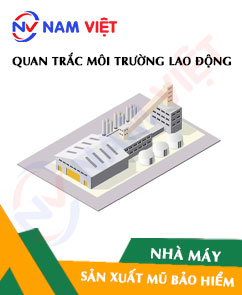
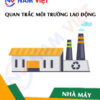
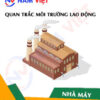

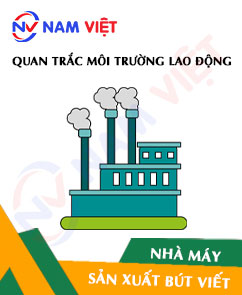

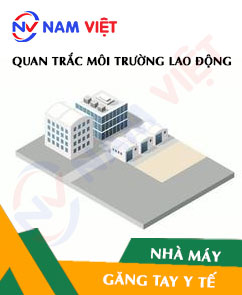
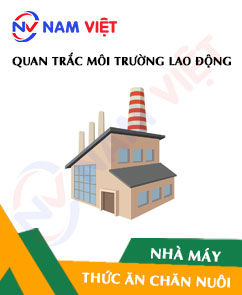

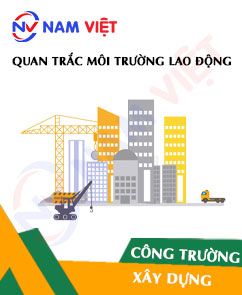
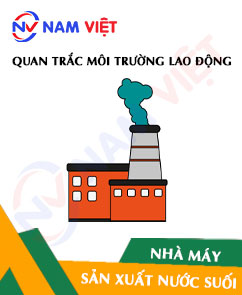
Review Occupational environment monitoring at a helmet manufacturing factory
There are no reviews yet.